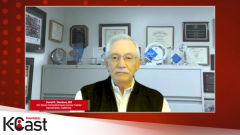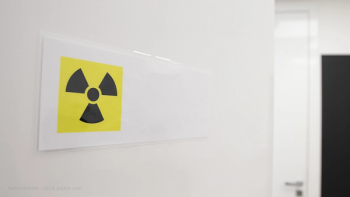
Comprehensive Genomic Profiling: Advancing Cancer Care
A clinical expert shared insight on the evolution of comprehensive genomic profiling and how it has impacted cancer care.
Episodes in this series

Transcript:
David R. Gandara, MD: The term comprehensive genomic profiling has come about as we have transitioned from research tools like whole-exome sequencing to commercially available platforms. There are quite a few available in the United States that do broad-based testing for genomic abnormalities in a variety of cancer types. Particularly pertinent is non–small cell lung cancer because of the large number of oncogenes, which are in guidelines. These platforms will assess from 70 to over 500 gene targets. They’re constructed in a way that they use minimal amounts of DNA. Some incorporate RNA. They’re also designed to have a turnaround time between 10 and 21 days.
The need for comprehensive genomic profiling today is greatest in advanced-stage non–small cell lung cancer because we have 8 guideline-recommended oncogenes that should be tested in all patients with advanced-stage disease, particularly those with nonsquamous histology. The reason is that if an oncologist sees a patient and 1 of these oncogenes is found, then the treatment is a targeted TKI [tyrosine kinase inhibitor] against that abnormality. Five or 6 abnormalities would be first-line, but you need to know about it because in the second line after other therapy would be the appropriate step to take. It’s incredibly important that oncologists employ a test that has a good turnaround time in addition to specificity and sensitivity, in that you want to be able to wait until you get the results.
Comprehensive genomic profiling can be accomplished in 2 ways. One is a classic tissue-based test that’s been available in the United States for close to 10 years. Following fairly quickly after that, the same genomic information has been obtained through plasma circulating tumor DNA. Those platforms in tissue and blood would include RNA analysis as well. Some include immunologic phenotyping by tumor mutational burden. Choosing between tissue and blood is a little different, whether you’re talking about a patient who’s newly diagnosed or a patient with an oncogene-driven cancer who has progressive disease after TKI and you’re looking for a mechanism of resistance. When to choose which is complicated. [In 2021] we published updated guidelines, from the IASLC [International Association for the Study of Lung Cancer], on the emerging role of plasma-based liquid biopsy and described the differences between tissue and blood or in some cases where you want to order both at the same time.
Transcript edited for clarity.
Newsletter
Get the latest industry news, event updates, and more from Managed healthcare Executive.























































